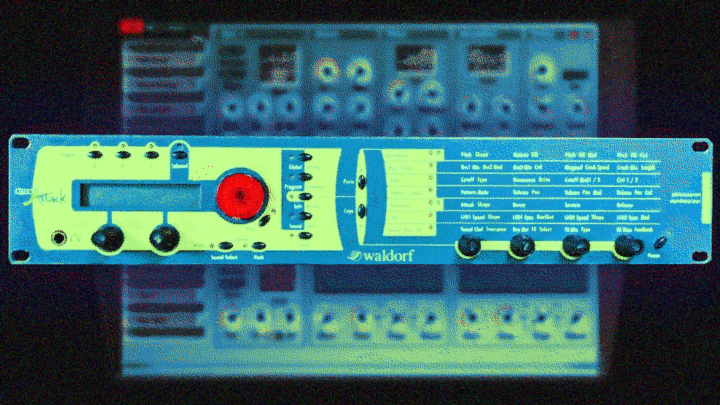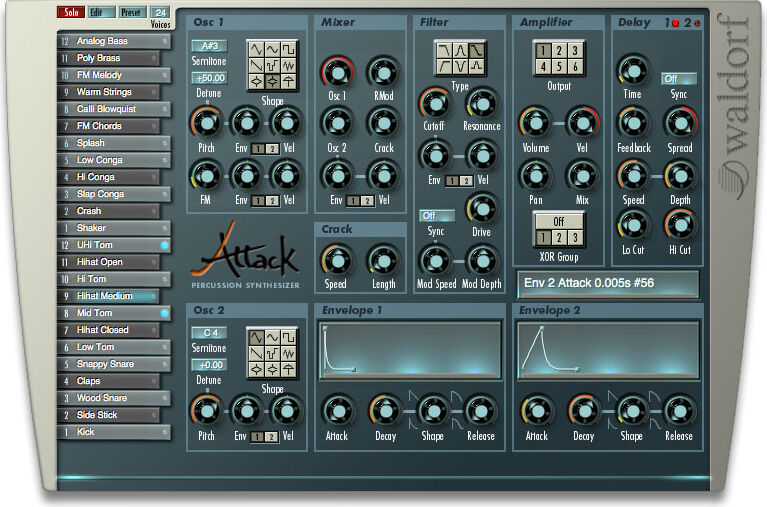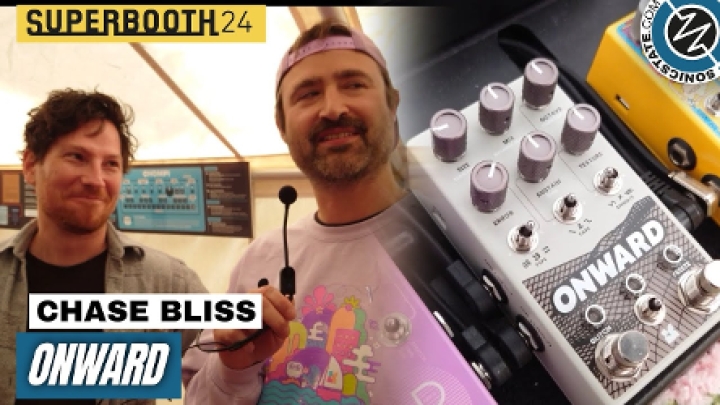Software Synths that Became Hardware!
US Sometimes, the soft becomes hard 02/05/24

|
I really enjoy software instruments; just look at Wavesequencer's Hyperion, a modular soft-synth that I recently had a blast with. But hardware still feels special to me, like I'm spending time in a meditative closed system that I can explore without distractions. Analogue hardware in particular, makes me feel like I'm a mad scientist in the best way possible.
Sometimes, the bits and bytes of software end up making their way into tangible hardware instruments, and you're in for an interesting time when that happens! Roland's Plug Out range is a modern, obvious example of boundary-crossing code, but here's 4 other interesting examples:
VCV Random
VCV Rack is an expansive modular playground. It allows anyone with a computer to try out modular patching and includes a vast library of modules, many of which are free. Although many real-world modules have virtualised versions within VCV (the Doepfer Wasp Filter being a great example!) - occasionally, one of VCV's original virtual-only modules will make it's way into the real world:
VCV Random is the hardware version of a well-known classic from the VCV Rack fundamental library. A random CV generator with 4 types of randomness and a triggerable sample-and-hold function.
Sliders allow you to set the internal clock tempo (RATE), shape the probability of triggering (PROB), blend old with new values (RND) and set the shape of all four random outputs (SHAPE).
For rando fans of randomisation, you could do a lot worse than give VCV random a look. Here's Molten Modular with a review:
Waldorf Rack Attack

Waldorf Attack was released during the VST Gold-rush of the early aughts; 2001 to be exact. It was a pretty imaginative and flexible drum synth for the time, with features like:
- 24 percussion sounds per kit(!)
- 2 oscillators
- Frequency modulation and ring modulation
- "Crack" module
- 6 filter types with resonance up to self-oscillation
- Overdrive up to 52dB
- Filter LFO, sync-able to tempo
- 2 envelopes
- Delay, Equalizer, Drive, Phaser, Flanger, Chorus and Reverb effects
Even now, I occasionally load up Attack and delight at both the sound design power and the imaginative preset kits. It's success led Waldorf, in 2003, to release a rack version called the Rack Attack. A number of cute colour combinations came out during it's lifetime and I kind of want the yellow one!

Now for an interesting bit of speculation. You'd think it might not be financially worth developing a costlier hardware version of existing software, right? Well I think that two things helped the Rack Attack stay attractive:
- The hardware has 6 separate outputs. Then, as now, many people processed drums on separate outs.
- There wasn't really any development required. As far as I can tell, the Rack Attack is incredibly similar to the existing (and popular) Micro Q. The differences? Some UI tweaks, the sounds can be set up as a 24-part kit and the Q's two wavetables have been axed - replaced by hi-hat samples.
Korg Legacy Collection
2004's original Korg Legacy collection featured software emulations of the Korg MS20 (with optional cute controller!), Polysix and Wavestation. I, like many synthesizer enthusiasts, used these instruments often in my music; so the 2007 arrival of these engines on OASYS, a hardware synth, was seen as an interesting anomaly.
They've continued to be featured in Korg's flagship Kronos & Nautilus workstations - and bring up an interesting debate about whether these synths even count as hardware. Reportedly, these instruments are merely custom software running on a PC motherboard - but such an approach is common throughout synthesizer history.
And anyhow, these EX versions feature extra goodies over the software! The Polysix, like every engine in the Kronos/Nautilus, benefits from extra envelopes and LFO's - ones that go up to Audio rates! The MS20-EX also features this wealth of modulation, but also, extra patch points. VCO1+2 have dedicated outputs, meaning that all range of audio-rate modulation is possible - try the lowpass filter, it's lovely!
Dtronics DT-DX
Finally, a bit of a fun example. I assume you all know Yamaha's 1983 DX7? Well for the past decade, Dexed has reigned as a popular free soft-synth emulation, doubling as a librarian for the original hardware. Now, Dtronics and Probonopd have ported Dexed back into hardware form as the DT-DX!
Features include:
- FM synthesizer closely modeled on the famous DX7
- Supports multiple voices through Program Change and Bank Change MIDI messages
- Loads voices from .syx files from SD card
- Runs up to 8 Dexed instances simultaneously (like in a TX816) and mixes their output together
- Allows for each Dexed instance to be detuned and stereo shifted
- Compressor effect
- Reverb effect
- 112dB Audio Stereo DAC
- Robust housing
- MIDI input/output
- USB (PC/power)
- USB (ext. Keyboard )
- Jack audio out left / Right
- Power button on/off
So what makes this a port of Dexed and not just a re-imagined DX7? I think that's down to the layering capabilities & built in effects - the DX7 was a dry, monotimbral affair. Also, I assume that this product will implement Dexed's lowpass filter with cutoff and resonance - making this a very different instrument to the original.
Thanks for stopping by and see you next time!
Posted by MagicalSynthAdventure an expert in synthesis technology from last Century and Amiga enthusiast.
< More From: MISCELLANEOUS
- The Tunes in Tokyo Train Stations 30-Apr-24
- 5 Ingenious Ways Synth-makers Saved Memory 26-Apr-24
- 3 of the Synth World's Most Outrageous Easter Eggs! 23-Apr-24
- 5 Firmware Updates that Totally Changed the Game 09-Apr-24
- Computer Music Chronicles, The 80's: Acorn Music 500 Synthesizer 16-Feb-24
Even more news...
Want Our Newsletter?
More...
Featured VideoThe sampler pedal that listens and moves with you
Older Music Machines & the People Who Still Use Them
The Avila Brothers talk about their journey to the recent Super Bowl Halftime Show












